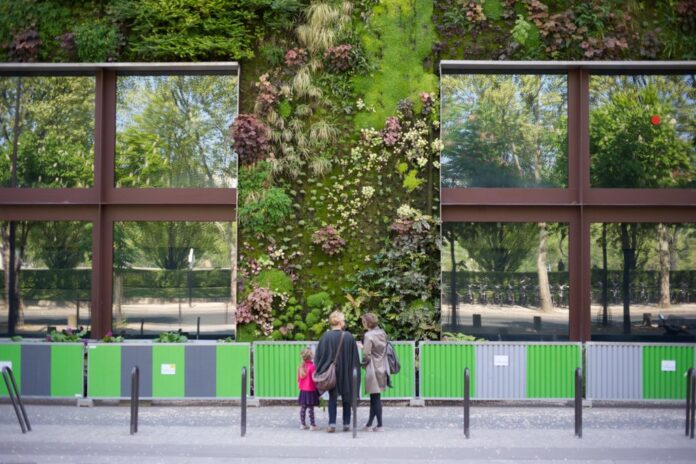From imaginative place branding strategies that highlight the essence of the place to community-led initiatives: there are hundreds of possibilities for location managers and marketers to boost their community’s sustainable development, an asset which is now so much sought after. But, how exactly can innovative place branding support the sustainable – even better, regenerative – development of visitor destinations, business locations or other “places” worth visiting, living or working?
We asked our panel of place brand specialists, and below you find their ideas and opportunities for innovation in place branding, with the aim to make locations more resilient, attractive or otherwise sustainable.
A few takeaways…
- Understanding the various needs and opinions of stakeholders like residents, businesses, and community groups is essential for anything to happen at the location.
- Promoting local products with local branding helps collaboration across sectors (like tourism and agriculture) and can create relationships with the community. This in turn can boost the image of the place.
- Implement nature-based solutions as a first move to get the sustainability journey started – improvise, learning by doing.
- Through your location marketing and management, boost green mobility and encourage public transport. It will help you on the journey towards sustainable development and benefits your reputation.
Andrew Hoyne
I believe place branding has the power to bring about real and meaningful change. As more and more place brands begin to hero sustainable aspects, people’s expectations will shift and we will begin to see sustainability as a non-negotiable, in residential, business and visitor locations.
This will put pressure on every place to consider their environmental, social and economic impact and hopefully ensure we’re seeing it done to a high standard everywhere. Places will realise that they just won’t succeed if they’re not investing in authentic sustainable credentials.
Christopher Hire
Places should look at the needs of residents or business stakeholders. So much is done for the ‘image’ or ‘marketability’ of the project – yet those purchasing apartments may take a different view. While end-of-trip facilities may matter for cyclists, others may prefer a shared market garden. Rather than a toolkit of token sustainability features, developers and place makers should engage with the preferred needs of their target users.
There is a lot of tokenism in sustainability. Meaning there is a misalignment between what the residents and businesses want and what is actually delivered. The data we produce at 2THINKNOW shows chronic misalignment between the ‘perception’ and ‘reality’ of place.
Ed Burghard
Design and deploy market research to identify barriers to residents achieving their best life, and use the data to guide community choices on infrastructure development, public policies, and public programs.
Günter Soydanbay
Today, the most exciting innovations in that field are coming from behavioural economics – an area that place branding should collaborate.
I am not of the mindset that sustainability is an inherent human motivation. Instead, it is an emerging property of complex adaptive systems. For instance, regardless of whether you go for a run or take a cold shower, your body will sustain its optimal temperature. If a species over-reproduces, nature corrects its course, and the system is sustained.
Societies, too, are complex adaptive systems. They set rules (nudges) for collective living to avoid the tragedy of the commons. By doing so, a human system can prevent an individual actor from over-consuming.
If you are looking for ideas for sustainable development of resident/business or visitor locations, you may want to read Aleks Vladimirov and Gary Warnaby’s article named “Place branding and locational decisions: Taking a behavioural economics perspective?“
Robert Govers
The brand of a city, region or country can only be managed by formulating and implementing a thorough long-term positioning strategy. Such a strategy should be based on local identity, in order to guarantee that it resonates with local stakeholders and retains longevity. The idea is that we want to create a unique positioning in the minds of (inter)national audiences, compared to other places; and research tells us that this is a long-term process and is done by consistently reflecting the intended positioning in the projects, policies, investments, infrastructures and events that places create.
So, reputations of cities, regions or countries are built through imaginative action, in the real world, not through propaganda. This is reflected in the place brands that have a historical presence in the minds of consumers around the world; cities, regions and countries that conjure up very strong associations that most of us hold dear in our minds. Some places do that; they are beacons in our collective consciousness. Paris – for instance – with its arts, architecture, city planning, local culture and language make it the city of romance. The Dutch built their country of the Netherlands with dykes and windmills to keep the water out. Gaudi’s imagination built the unique brand of Barcelona.
I call them imaginative communities. They have a clear understanding of what it is that brings the community together; what the sense of comradeship and purpose is. Imaginative communities reinforce and strengthen this identity while featuring it in original, creative, innovative, captivating and inspiring imaginative initiatives that show the world what the community is about in order to build a distinctive, relevant, authentic, consistent and memorable reputation. Imaginative initiatives that such communities develop can be policies, infrastructures, projects, investments or events; and this is where climate action comes in.
In recent years it has become increasingly common for me to get asked how place brand management and climate action are linked. “Can we position ourselves as a green city, region or country?”. This is a hopeful development, of course, as it reflects the fact that global warming has become a mainstream concern and people – policymakers, stakeholders, as well as the public at large – are now very conscious of the need for action.
However, in the way that there can be only one city of romance and one country of dykes, windmills and tulips there can only be one green city, region or country. If everyone aims for a green positioning, it defeats the purpose of branding; i.e., to stand out.
However, obviously, that does not mean that climate action can and should not always be incorporated into the implementation of the imaginative initiatives that are part of the strategic implementation of the reputational strategies of places. Climate specialists (like the Dutch national weatherman Reinier van den Berg) indicate that there are a couple of low-hanging objectives that we must implement right away, such as:
- Electrifying (shared) mobility (what Paris is aiming for)
- Monitoring our food print (offering alternative food options, such as the city of Ghent being the vegan capital of Belgium)
- Greening of spaces (avoiding heat islands, such as the green capital Vitoria-Gasteiz has done)
- Bio-based building
- Renewable energy provision
- Fair pricing
None of these is contradictory to the aim of developing more reputable profitable places. In fact, quite the contrary. Many of the things we need to do make places more attractive (less heat, less noise, healthier food, better value for money) and hence it makes complete sense to incorporate such actions in the imaginative initiatives deployed to implement reputational positioning strategies.
Not to be another green city, region or country (we already have too many smart cities) but to create your unique positioning in your own way, befitting your identity, while taking climate action on board. Everyone really needs to get on it now!
 Stuart Speirs
Stuart Speirs
The opportunity for locations and destinations is to get ahead of the curve. Do things that may seem adventurous at the moment, but once they’re done, will feel completely part of the norm. Overcoming the status quo and confirmation bias will open up enormous opportunities for places to differentiate themselves.
Todd Babiak
Our cities and regions are built for cars, and the more we build for cars the more disconnected we will be from the culture of the people who live in our places. Culture is the core of a place brand. So anything to replace cars with people is the simplest kind of innovation. Living, eating, celebrating, making art, walking, cycling, growing food, planting trees, creating, building… anything but cars.
Tom Buncle
Destinations need to shift the balance of their focus much more in favour of destination management/stewardship. This will mean reduced spending on marketing for some. However, marketing also needs to be much more focused on target segments, which will deliver the type of tourism communities want, rather than merely chasing the tourism dollar indiscriminately.
The mantra of “more, more, more” needs to change to “better, better, better”. Embedding this philosophy within the brand will be critical, both to local support back home and to getting noticed and appreciated internationally.
Jaume Marín
Trying to get local people involved in the process of planning, and creating excellent labels for local products, so everyone would be proud as a brand, and it would be more efficient and local promotion creating synergies between the food industry, agro-tourism and tourists.
Malcolm Allan
Costa Rica illustrates the need for countries, regions, cities and destinations to put place brand strategy at the heart of their development, not seeing it just as the “servant” of place making and development. Now that would be truly innovative for many places.
Sonya Hanna
Sustainability is a broad concept that not only embraces the protection of our natural environment but also the socio-economic aspects of places, such as education, employment, quality of life and well-being.
At the core of place branding is community participation, so it would be pertinent to consider (in the context of the aforesaid dimensions) the impact/or lack of sustainability practices on future generations, to ascertain how sustainable place branding is aiming for a better human, not just an environmental future.
More about the panel – including previews insights – here
Enjoyed this snapshot of expert views on sustainability opportunities through innovative place branding? Thanks for sharing!









